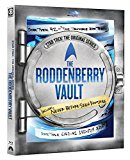| Reviews & Columns |
|
Reviews DVD TV on DVD Blu-ray 4K UHD International DVDs In Theaters Reviews by Studio Video Games Features Collector Series DVDs Easter Egg Database Interviews DVD Talk Radio Feature Articles Columns Anime Talk DVD Savant Horror DVDs The M.O.D. Squad Art House HD Talk Silent DVD
|
DVD Talk Forum |
|
|
| Resources |
|
DVD Price Search Customer Service #'s RCE Info Links |
|
Columns
|
|
|
Star Trek: The Original Series - The Roddenberry Vault
A few hours of extras, supplemented with Star Trek episodes
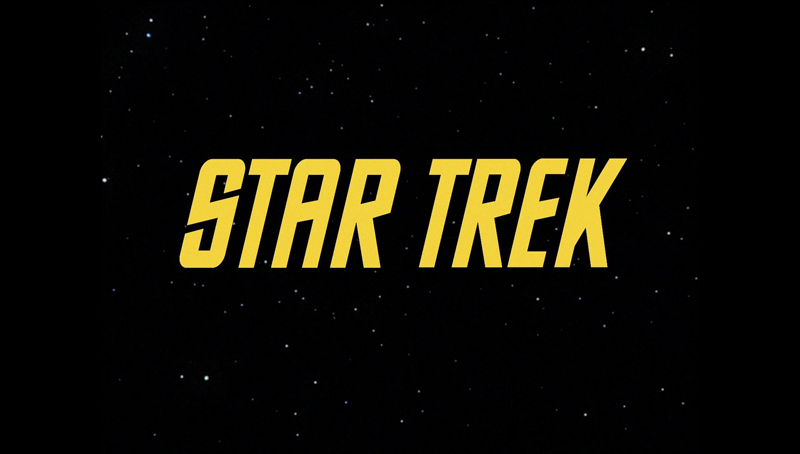
Reviewer's Bias*
Loves: Star Trek: The Next Generation
Likes: Star Trek, good bonus content
Dislikes: Best-of sets
Hates: When loyal fan bases become piggy banks
The Show
The weird thing about this classic television series release is that the reason to own it is not the episodes of classic television it contains. In fact, the majority of the people most interested in this set probably already own these episodes, perhaps in multiple permutations. But they'll likely buy these entries once again, in order to acquire the new bonus content they accompany.
The original Star Trek remains a wonderful, yet in some ways flawed vision of an idyllic society where science, acceptance and thought are as important as any of the rest of man's motivations and pursuits, if not more so. Populate that society with iconic characters like the heroic man's-man Captain James T. Kirk (William Shatner), the logic-driven Mr Spock (Leonard Nimoy) and the rest of the crew of the U.S.S. Enterprise, and place them into smart and imaginative stories from TV and science-fiction greats like Jerry Sohl, Gene Coon, Frederic Brown, D.C. Fontana and especially the great Harlan Ellison, and the result is a memorable space adventure that mixes action and intelligence in just the right proportions. In a world on the brink of jettisoning fact and hope in exchange for fear and greed, Star Trek is a reminder of what we, as a part of humanity, should be striving for.
The adventures of Kirk, Spock and the rest of the team aboard the Enterprise are a part of their mission to explore the galaxy, which brings them into frequent contact and conflict with alien life. Though there's plenty of phaser fights and near-laughable hand-to-hand combat that arises from these interactions (especially with less humanoid creatures like those seen in "The Devil in the Dark" and "Operation: Annihilate!"), the crew are just as likely to attempt a peaceful, thoughtful solution to a problem, which is a big part of why the show remains relevant 50 years later. Kirk may be able to throw a punch, sling lasers and outgun a starship, but he's just as likely to use his brain (and the brains of his team) in a fight. There's more to Shatner's performance than outsized bluster and aggressive pauses: Kirk is both soldier and statesman.
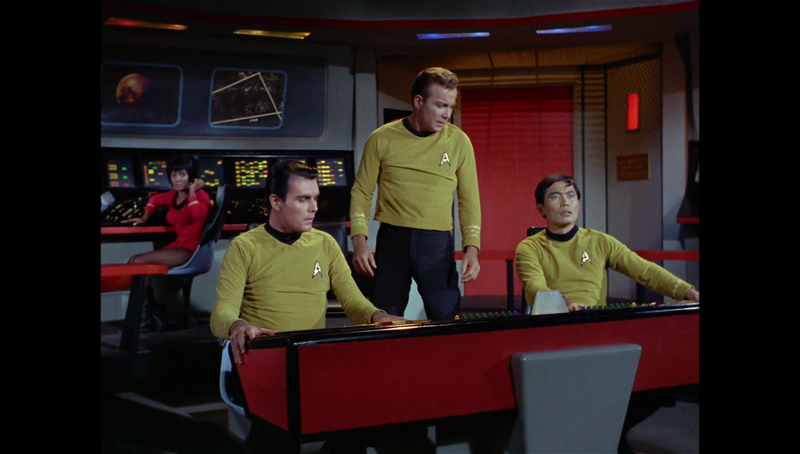
Of course, the rest of his crew is key to the mission as well, whether it's his logical science officer Mr. Spock, his ship's doctor and pal Bones (DeForest Kelley), Enterprise helmsman Sulu (George Takei), communications expert Uhura (Nichelle Nichols), Scotty the ship's engineer (James Doohan) and young Russian navigator Chekov (Walter Koenig). The episodes in this set don't get too deep into their characters, offering glimpses into who they are beyond their service roles, with Spock and Bones getting the most spotlight. The usual assortment of cannon fodder (the iconic "redshirts") and pretty female officers are on hand as well, in the kinds of single-serving roles necessary for that week's plot and discarded soon after. It's always humorous when Kirk sees an attractive officer and doesn't know who she is. Where are these women hiding aboard this ship? (Perhaps in plain sight, for as progressive as the society of Star Trek may be, women are still taking a backseat, serving mainly as objects of desire, with the notable exception of Uhuru.)
The series can get stuck in a bit of a rut at times, with similar cold opens to establish the episode's threat from the stars, and the usual tropes of a landing team beaming down to a planet only to find themselves in peril and aliens with unclear, but likely malevolent motivations. However similar the shows could be, the cast makes you want to spend time with these characters. Shatner is able to work both sides of Kirk's personality to great effect, while Nimoy is the perfect foil for the captain, playing his Vulcan not without emotion, as many view the part, but as a being attempting to suppress the feelings that come thanks to his half-human origins.
The truly undervalued member of the cast however (with due respect for Takei's gravitas) is Kelley, whose Bones completes the show's three-part core, giving Kirk the buddy that Spock's personality won't let him be. That's important, because the show is highly focused on interpersonal relationships, caring about the characters as much as the actions they take. As a result, the show was far more than just sci-fi, despite the ravenous fan base it's engendered. My wife caught herself enthralled while sitting in the room as these discs played, and she's about as far from a sci-fi fan as you could find.
The criteria used for the selection of episodes in this set isn't exactly clear, though it does result in the inclusion of a number of classic episodes (as well as the complete exclusion of the weak third season.) Some of the greatest Star Trek episodes ever are here to enjoy, including favorites like the Joan Collins-featuring "The City on the Edge of Forever", the delightfully weird, yet cerebral "The Corbomite Maneuver" (with a young Clint Howard) and "Mirror, Mirror", which introduced the world to the idea that facial hair could indicate evil, thanks to the presence of an alternate-reality Mr. Spock. You can't argue that episodes like "Space Seed", which introduces Ricardo Montalban as the charismatic villain Khan, or "The Trouble with Tribbles", a surprisingly humorous tale which brought the world those oft-replicating furry puffballs, shouldn't be included in a set like this. There's a good mix of storylines, and a welcome lack of Kirk-on-alien-girl action.
That said, to choose a decent, but less-memorable episode like "Who Mourns for Adonais?" or the off-formula Spock-centric "This Side of Paradise" over a "Balance of Terror" or "Amok Time" is an odd choice, one which makes you wonder if a second volume from "The Roddenberry Vault" isn't ready to go if sales justify it, and some key episodes had to be held back to draw buyers in for another round. Call me cynical, but it doesn't take a Vulcan to figure out this logic.
Here's the rundown of the episodes included:
- "The Corbomite Maneuver"
- "Arena"
- "Space Seed"
- "This Side of Paradise"
- "The Devil in the Dark"
- "The City on the Edge of Forever"
- "Operation: Annihilate!"
- "Metamorphosis"
- "Who Mourns for Adonais?"
- "Mirror, Mirror"
- "The Trouble with Tribbles"
- "Return to Tomorrow"
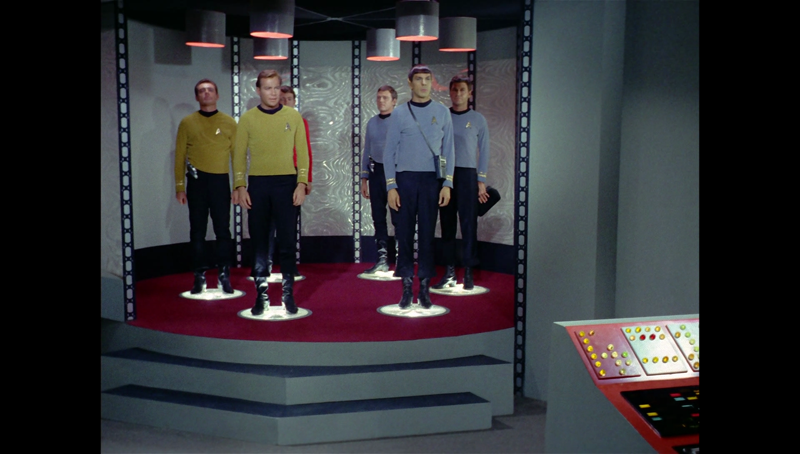
The 12 episodes in "The Roddenberry Vault" are spread evenly over three Blu-ray discs, which are packed in a standard-width keepcase with a dual-hubbed tray and a two-sided cover listing the content in the set. For the limited-edition first run, the keepcase is held in a heavy cardboard slipcover, with a magnetic latch on the vault door (which keeps the keepcase in the slipcover) and a second magnet-held cover with classic photos from the series. The slipcover is then enclosed in a very tight, clear plastic sleeve that's very hard to get off and remarkably harder to put back on. The discs feature animated menus offering a choice to watch all the episodes, select shows, adjust the setup and check out the special features. Audio options include English DTS-HD Master Audio 7.1 and mono Dolby Digital 2.0 tracks, along with German, Spanish and Italian Dolby Digital 2.0 tracks, while subtitles are available in English SDH, Danish, Norwegian, Finnish, German, Spanish, Swedish and Italian.
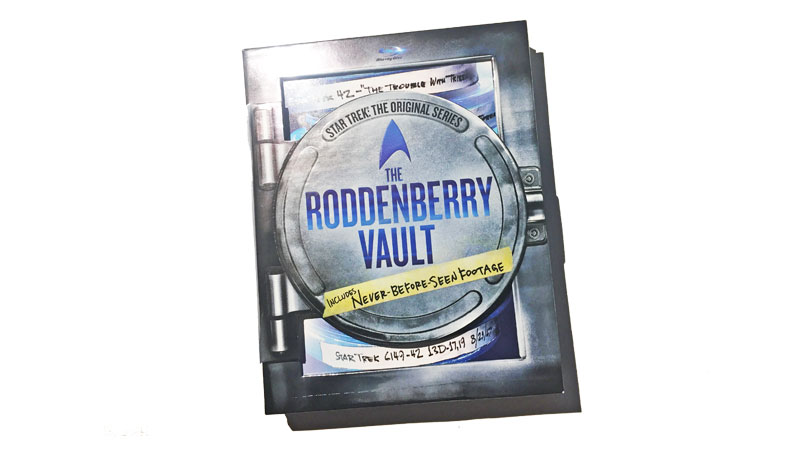
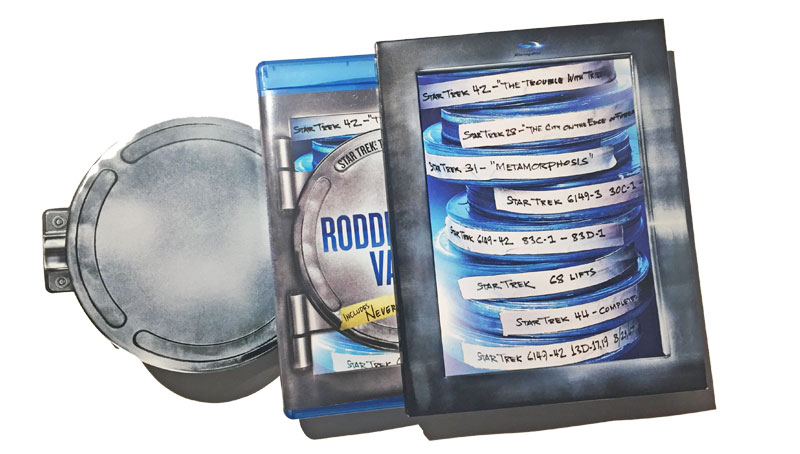
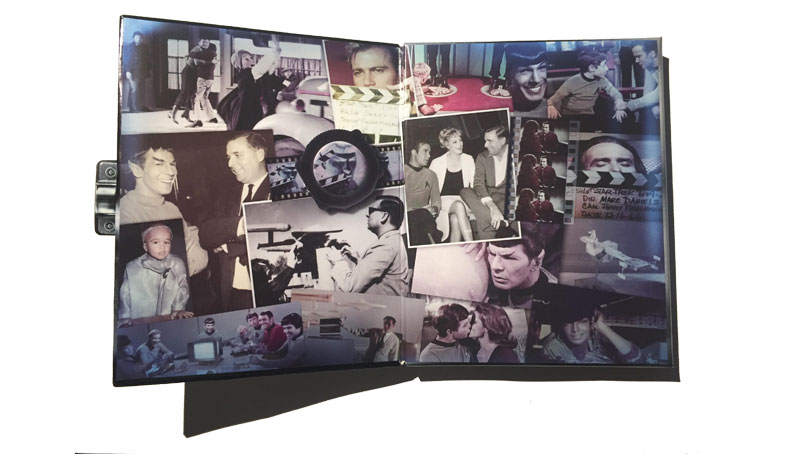
The Quality
You can watch the column-boxed 4:3, AVC-encoded 1080p transfers in two flavors: the original and a version with enhanced special effects. While the purists may want to enjoy the experience they remember, the quality of the clean-up is far too impressive to not watch. The difference between the untouched and enhanced versions is like the difference between 20/20 sight and astigmatism. There's just such vibrancy and detail in the new effects, and yet they don't stick out horribly from the original materials. In fact, they are integrated quite well, aided by the quality of the rest of the image (despite some occasional softness in the image, and not just during the soft-focus shots of the series' lovely ladies.) The level of fine detail is often surprising--in a good way--with the unfortunate side effect of making some of the practical effects work look rather obvious (like evil Sulu's scar.) Colors are bright and well-saturated and black levels, where present, are strong, while the level of grain is uniform and fits the show's celluloid origins. The high quality of the enhanced episodes is genuinely shocking to anyone who only remembers the show's SD days.
The 7.1 DTS-HD Master Audio tracks don't offer quite the revelatory experience provided the visuals, but there's a lot to like about the sound, particularly the panning and movement in the surrounds when the Enterprise does a fly-by--easily the most memorable part of the presentation. The rest of the tracks are full of life, whether it's the center-focused dialogue or the impressive atmospherics, powered by all the activity around the ship. The music is also well-placed, getting some emphasis from the surrounds and sounding crisp and strong. The low-end isn't a major portion of the mix, but that doesn't mean the music doesn't often have the power necessary to enhance a dramatic scene.
The Extras
Now here's the reason to own these discs. Disappointingly, existing extras for episodes like "Space Seed" and "The Trouble with Tribbles" were not carried over to this collection, but it seems the focus was on presenting some new perspective. First up in the extras are three audio commentaries, featuring a mix of crew and fans/experts.Each has it's own point of view, with Fontana and Stanton touching on the experience of being a female writer in the male-dominated world of sci-fi, the trio on "City" going for more of a barrage of trivia and observations, and the two Davids discussing comedy and changes that occurred in the industry at the time of the show. All three are loaded with solid trivia and great stories, including tales of Harlan Ellison and milestones in TV language.
- "This Side of Paradise": writer Dorothy "D.C." Fontana and Gabrielle Stanton (writer/producer, The Flash)
- "The City on the Edge of Forever": documentarian Roger Lay Jr., critic Scott Mantz and Mark A. Altman (co-executive producer, The Librarians)
- "he Trouble With Tribbles": writer David Gerrold and David A. Goodman(producer, Faily Guy}
There's a three-part documentary spread over the three discs, Inside the Roddenberry Vault (90:52), which introduces the titular "vault" and the material it held, before looking at each of the 12 episodes in the collection, and supplementing the discussion by cast, crew and famous fans with clips from the Star Trek archives, including deleted scenes, cut dialogue and special effects materials. Hearing from the assembled participants, including Shatner, Takei, Nicholls, Koenig, the commentary teams and a host of collaborators, fans, experts and fans, such as the Okudas, The Big Bang Theory co-creator Bill Prady, The Simpsons producer David Mirkin, Adam Nimoy and Bill Nye the Science Guy, is fun and enlightening, and the vault content is well used as illustrations for the stories and memories. There are some truly interesting items shared, including flubs and laughter on the set and the story of the death of Shatner's father and how it affected the filming of the show.
"Star Trek: Revisiting a Classic" (30:22) includes many of the participants from the documentary (leaning more on the original cast and crew) as they discuss what made the show special and why it continues to find new fans decades after it originally aired, with a focus on Roddenberry and the core cast's contributions.
"Strange New Worlds: Visualizing the Fantastic" (27:16) takes a more narrow angle, looking at the show's design and special effects. A few new guests, including NASA mohawk guy Bobak Ferdowsi. Join the party, which includes a wealth of art and raw materials from the show's visual effects shots, as well as an explanation of what an optical printer is, for the uninitiated. Anyone interested in how the show showed the future will find this piece fascinating.
Wrapping things up is the 21:24 "Swept Up: Snippets from the Cutting Room Floor", a collection of various bits and pieces, including dialogue that was cut from the show, behind-the-scenes peeks and effects work, as well as a beautiful musical performance by Nicholls. Without content, much of this is lacking a bit in value in comparison with the rest of the extras, but for curiosity's sake, it's worth a look.
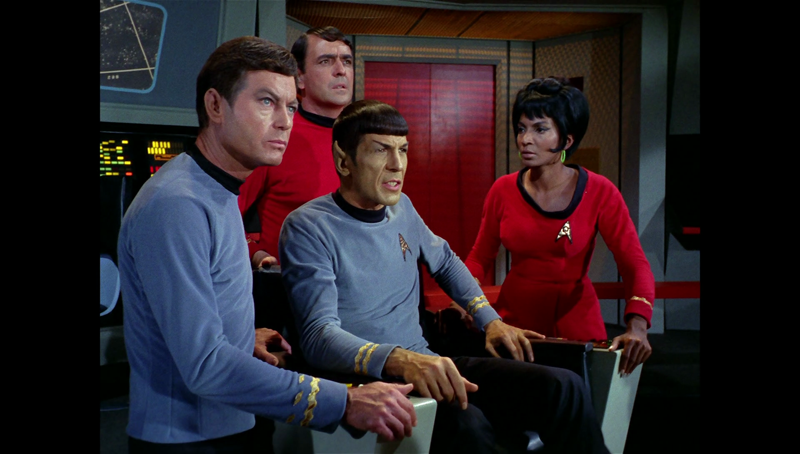
The perfect audience for this set would be someone with a casual interest in Star Trek who wants to know more about the production of classic television. For them, the 12 solid episodes and informative bonus content is a perfect way to get a satisfying taste of Trek. But for the die-hards, who will undoubtedly want to check out the set's glimpses behind the scenes, they will likely be purchasing these episodes yet again, a frustrating cost to bear. On the positive side, the episodes look and sound fantastic and the bonus content is a delight, offering plenty to both the faithful and tourists alike. Though it's hard to justify a purchase if you already own these episodes in high-definition, for those who have held out and have no plans for owning the complete series collections, it's a worthy sampler.
Francis Rizzo III is a native Long Islander, where he works in academia. In his spare time, he enjoys watching hockey, writing and spending time with his wife, daughter and puppy.Follow him on Twitter
*The Reviewer's Bias section is an attempt to help readers use the review to its best effect. By knowing where the reviewer's biases lie on the film's subject matter, one can read the review with the right mindset.
|
| Popular Reviews |
| Sponsored Links |
|
|
| Sponsored Links |
|
|
| Release List | Reviews | Shop | Newsletter | Forum | DVD Giveaways | Blu-Ray | Advertise |
|
Copyright 2024 DVDTalk.com All Rights Reserved. Legal Info, Privacy Policy, Terms of Use,
Manage Preferences,
Your Privacy Choices | |||||||









